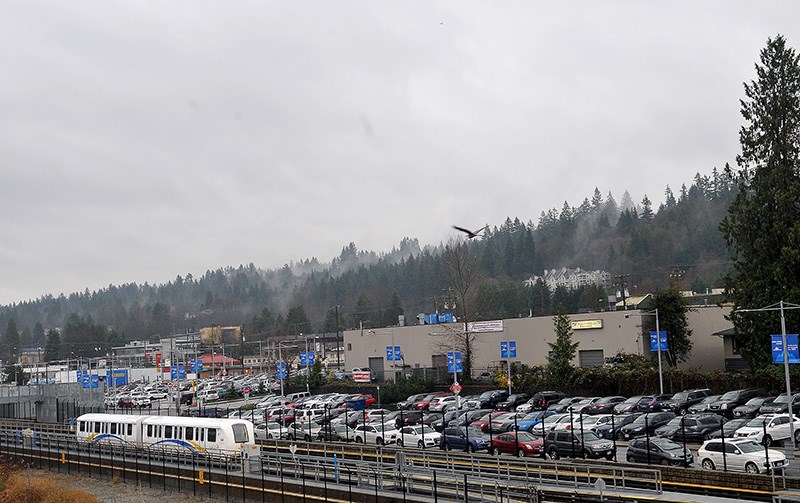Port Moody council wants to turn the area around the Moody Centre SkyTrain station into a vibrant, high-density urban neighbourhood that could be home to thousands of people.
Now it just needs developers to make it happen.
At a marathon meeting Tuesday evening, council adopted an amendment to the city’s official community plan to turn the six square blocks bounded by St. Johns Street to the rail lines and from Moody Street to Electronic Avenue to a transit-oriented development area. The decision paves the way for the city’s centre to transform from low commercial and light-industrial buildings to a pedestrian-friendly mix of multi-family residential buildings from six to 26 storeys, shops, offices, wide sidewalks, public plazas and an urban greenway along a daylighted Slaughterhouse Creek. Currently, it’s zoned for buildings no taller than 12 storeys.
Council’s vision for the area also includes a new pedestrian overpass just east of the Moody Centre SkyTrain and West Coast Express station linking to Murray Street and Rocky Point Park, as well as the extension of Spring Street to create a pedestrian promenade.
But it’s still just a vision, Port Moody Mayor Mike Clay reminded councillors after a vigorous debate that followed a two-and-a-half hour public hearing on the plan.
“We need to come up with some drawings to articulate what we’re talking about,” said Clay, adding that lack of specific plans for building out the neighbourhood may be fuelling some of the fears in the community — and amongst some councillors — it could become another Metrotown or Burquitlam.
Ensuring that doesn’t happen will be up to council as developers start coming forward with projects to fulfill the new vision for the neighbourhood.
“This is the easy part,” Clay said. “It does get hard from here.”
One of those developers could be the Kwikwetlem First Nation, whose chief, Ron Giesbrecht, told council at the public hearing it was in the process of acquiring land in Moody Centre with an eye to building rental apartments.
“It’s going to be a spectacular part of Port Moody,” he said.
That prospect excited Clay.
“We have a unique opportunity here when First Nations are partnering with us,” he said.
Not everyone shared his enthusiasm.
Speakers during the public hearing who opposed the plan expressed concerns about increased traffic and pressures on nearby schools and parks as well as a diminished quality of life in the city.
“Towers would destroy what everyone loves about Port Moody,” one said.
Coun. Hunter Madsen said the impassioned pleas prove “the public is not aligned with council’s vision for Moody Centre.”
He was one of three councillors — the others are Rob Vagramov and Zoe Royer — who opposed the new vision.
But Coun. Diana Dilworth said the plan’s positives outweigh the negatives. She pointed to the success of Newport Village and Suter Brook as examples of how highrise development can increase the livability of a neighbourhood.
“This is what the community has been asking for for years,” she said. “We’re putting the centre back in Moody Centre.”



